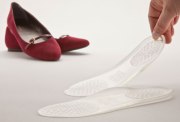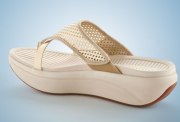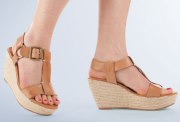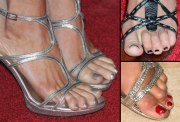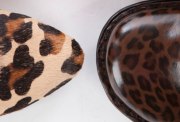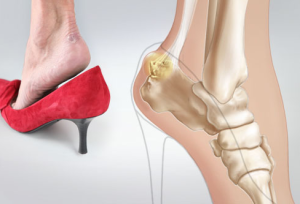 Here, we show you a list of the worst shoes there are in the market and that you definitely should avoid for healthy foot. Take a closer look at the heights, styles, and woes of today’s footwear. Here is a list of all the problems you can have if you continue wearing with high heels and the possible solutions you need to consider
Here, we show you a list of the worst shoes there are in the market and that you definitely should avoid for healthy foot. Take a closer look at the heights, styles, and woes of today’s footwear. Here is a list of all the problems you can have if you continue wearing with high heels and the possible solutions you need to consider
“Heels are getting higher” says Hillary Brenner, a spokeswoman for the American Podiatric Medical Association. “We podiatrists like to call it shoe-icide” It is important for you to know that ultra-high heels can lead to everything from ankle sprains to chronic pain. Let’s take a closer look at the heights, styles, and woes of today’s footwear.
Problem: Pump Bump
Whether they’re sky-high or mid-heel, this style is notorious for producing a painful knot on the back of the heel. The rigid material presses on a bony deformity some women call a “pump bump.” The pressure leads to blisters, swelling, bursitis, even pain in the Achilles tendon. Ice, orthotics, and heel pads may provide pain relief along, of course, with better shoes; however, the bony protrusion is permanent.
Problem: Unnatural Foot Position
These are one of the worst shoes to wear, the ultra-high heels force the feet into a position that puts pressure on the ball of the foot. So there is too much pressure and it can inflame these bones or the nerves that surround them. Chronic stress to the foot bones can even lead to hairline fractures.
Problem: Unnatural Foot Position
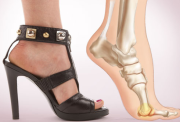
These are one of the worst shoes to wear, the ultra-high heels force the feet into a position that puts pressure on the ball of the foot. So there is too much pressure and it can inflame these bones or the nerves that surround them. Chronic stress to the foot bones can even lead to hairline fractures.
Solution: The Solution suggested is to switch to lower heels that will help you avoid problems with the metatarsal bones. The lower you go, the more natural your foot position will be. It is totally recommended to choose heels that are no more than 2 inches high.
Problem: Stilettos 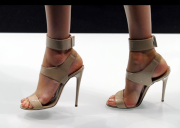
It is know that all high heels can cause problems but the ultra-narrow heels of stilettos are particularly dangerous. “All the weight is pinpointed on one zone. That makes you shake like you’re walking on stilts.” You can trip and sprain your ankle.
Solution: Chunky Heels
We suggest chunky heels because they have more surface area and distribute your weight more equally. This makes the feet more stable. Although thick high heels can still put stress on the ball of your foot, they will reduce the tripping hazard by minimizing your wobble.
With this kind of shoes there is no arch support whatsoever. That keeps the feet from functioning optimally and can lead to knee, hip, and back problems. What it is called plantar fasciitis is related to poor arch support that can originate a painful foot condition.
If you don’t want to leave wearing ballet flats, over-the-counter inserts (shown here on the photo below) may help prevent mild foot pain. Heel pads can afford extra cushioning for achy heels. Podiatrists prescribe these inserts to provide arch support and decrease pressure on sensitive areas. Prescription orthotics are not cheap, but are sometimes covered by insurance.
Problem: Plantar Fasciitis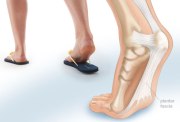
When you were ballerinas, flip-flops and all kind of flat shoes, they offer very little protection. People who suffer diabetes should not wear flip-flops because simple cuts and scrapes can lead to severe complications. The risk of getting splinters is higher when the feet are so exposed. Walking barefoot, or in flimsy shoes without necessary arch support, can overstretch, tear, or inflame the plantar fascia. These kinds of shoes can aggravate plantar fasciitis and cause problems with knees, hips, or back. This condition can cause intense heel pain, and resting the feet only provides temporary relief.
Sporty, fitted sandals and other “toning shoes” are considered for a more intense workout while walking. The American Council on Exercise says there’s no evidence to support that claim, but they may have other benefits. This kind of thick sole keeps your foot off the ground and they do have good arch support.
Platform shoes and wedges tend to have rigid foot beds. This originates that your foot will try to bend a certain way, but what really is happening is that the shoe is fighting you because it’s so rigid. If the heel of the platform is much higher than the toe area, the shoe also puts pressure on the metatarsal bones.
Although this is still not recommended, a flatter platform shoe may put less strain on your feet than its peers. Look for an extensive wedge or platform that is nearly equivalent with the ground. This will lessen the pressure on the ball of the foot.
High heeled shoes push too much body weight toward the toes and then squeeze them together. The result of this can be hammertoes (early stage, lower right), abnormal bends in the toe joints that can gradually become rigid. To relieve the pain of severe hammerto, sometimes, surgery is needed. Crowding can cause other toe deformities, along with continuous shoe friction, leading to painful corns and awful calluses.
You should select boxier shoes and avoid the pointy toe peril. If that style doesn’t appeal to you, look for shoes that slope to a point beyond the edge of your toes. A healthy style won’t pinch the tips or sides of your toes. You should also choose a softer material, rather than stiff leather.
We hope this examples help you find the right shoe for you next time you go shopping. Healthy feet are important so consider taking good care of them.
For more information about foot problems, feel free to contact Dr. Daniel Drapacz at: Make a Question or Call at (646)6263033 and book an appointment.



